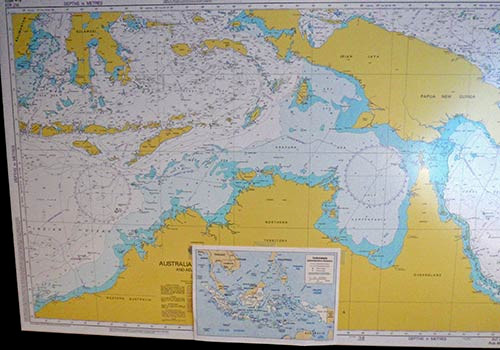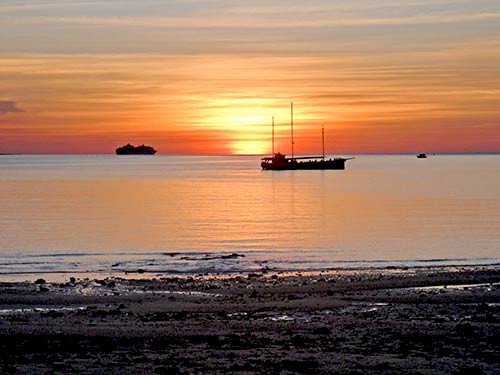The perspective from Australia's Top End; fishing, international waters, and invasive species
Bill Dennison ·The Arafura and Timor Ecosystem Action (ATSEA) program is a multi-national agreement between Australia, Indonesia, and Timor Leste (East Timor). It was formed as part of the United Nations Global Environment Facility (GEF). The northern coast of Australia, the western portion of the Papua New Guinea and the Indonesian island archipelago which includes Timor form a large semi-enclosed sea, the multinational arrangement was formed to facilitate shared resource management responsibility and development opportunities.

The Arafura and Timor Seas are a region of particularly acute sea surface temperature increases. This mini-hot house is leading to accelerated rates of relative sea surface temperature rise. The region is already depauperate in actively building coral reefs due to the heat stress, so coral bleaching is not as large an issue as for the Great Barrier Reef, for example. The oceanography of the region is dominated by seasonal monsoons, in which the southeasterly dry period winds are reversed into northwesterly winds during the wet season. The wind reversal contributes to a seasonal variation in mean sea level as well.

There is a major net flow of ocean water from equatorial waters of the northeastern portion of the Indonesian archipelago toward the Timor Sea, representing a globally significant transfer of heat. The large fast currents, called the Indonesian Throughflow also transport sediments that are rapidly eroding off the steep islands of New Guinea and Indonesia into the Timor Sea which results in accumulations of terrigenous sediments in the northern Timor Sea. The Indonesian Throughflow also is a marine mammal highway, with whales and dolphins riding the current into the Timor Sea.
The fishing pressure in international waters and in Australia's exclusive economic zone is building due to Indonesian and Chinese fishing pressure. A map of vessel sightings in 2000 shows a concentration of fishing along Australia's Exclusive Economic Zone (EEZ), but the 2005 map of vessel sightings has the fishing effort substantially south of the EEZ boundary approaching the Australian coast. Fish surveys of reefs experiencing increased fishing pressure show the decline in large species like sharks (shark finning is common for shark fin soup markets), and nearly complete removal of Trochus shells used for mother-of-pearl and trepang (sea cucumber) used for food.
The illegal fishing effort dramatically expanded in the 2000s, and has led to an increased border patrol presence by the Australian military. The border control also deals with boats carrying illegal aliens. Darwin is building detention centers used for processing illegal aliens applying for refugee status.
Darwin Harbour is one of the rare instances of a successful eradication of an invasive species. The black striped mussel, Mytilopsis sallei, was discovered during an underwater survey in Cullen Bay marina in 1999. A task force was mobilized rapidly and an action plan enacted which involved tracking down and inspecting all boats that had used the marina, closing the marina off and killing all living things using repeated doses of chlorine and copper. The eradication was successful, and it demonstrated the importance of early detection, rapid response and extreme measures needed to be successful.
References:
Field, IC, Meekan, MG, Buckworth, RC, and Bradshaw, CJI. 2009. Protein mining the world's oceans: Australasia as an example of illegal expansion-and-displacement fishing. Fish and Fisheries 10: 323-328.
About the author
Bill Dennison

Dr. Bill Dennison is a Professor of Marine Science and Interim President at the University of Maryland Center for Environmental Science (UMCES).
Next Post > Darwin: Captain Wickham, Harriet the Tortoise, Alaskan similarities, and Darwinian art
Comments
-
John Andrews 12 years ago
I know there is a massive effort to improve conservation in this area, but when you say the effort has been expanded, do you mean trawling or fishing in general? Ie game fisherman?
-
Atika 3 months ago
do you mean trawling or fishing in general? Ie game fisherman?